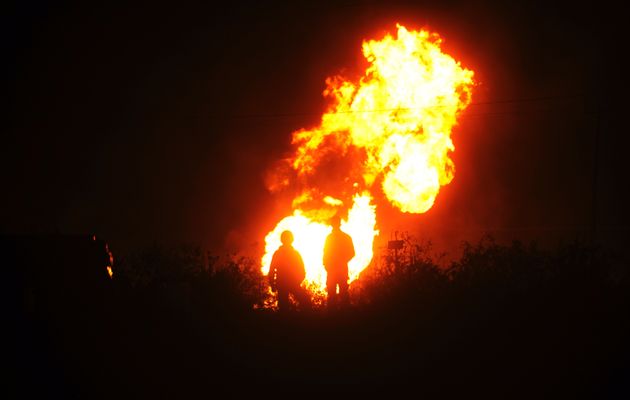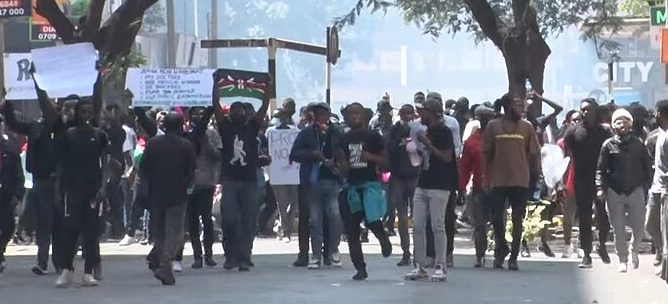Feb. 23 (GIN) – An early morning fire swept through the Kusasalethu gold mine, southwest of Johannesberg, trapping close to 500 workers on a Sunday shift.
The miners were more than 7,500 feet underground when the incident was reported. Three underground fires were reported in October last year and at least one two-week mine closure.
Prayers were said and all the men were pulled to safety after efforts taking 11 hours.
South Africa’s gold mines are the deepest in the world and were ranked as among the most dangerous during the apartheid era. The industry recorded over 100 deaths per year before 2013, according to the mines ministry.
Ironically, the near-disaster coincided with two major mining summits – called Indabas – though a huge difference separated the two. At one summit – called the Alternative Indaba – were actual miners, or those from mining-affected communities. At the other indaba, called Investing in African Mining, where tickets cost skyward of 23,000 rand (1,900 U.S. dollars), were corporate execs, government delegations and investors from over 2,300 international companies
The two mining indabas take place in Cape Town every February and are about 5 kms apart, but their stark differences suggest they could be taking place at opposite ends of the world,” observed Ann Crotty in Business Day Live, a South African publication.
Rebecca Davis of the Daily Maverick newspaper, who attended the alternative indaba, described the mood. “People were angry,” she wrote. “They were so angry, in fact, that the first address of the first day could not be completed without activists demanding the microphone, determined to have their say.“
At the summit opening, a march was organized with signs reading: “Please leave my land, I am using it for agriculture (I am a widow)”. “Stop polluting our water.” “Africa is not for sale!” “Our mineral resources, our future!” “It’s not development when the environment is being destroyed.” “No to tax dodging!”
Some 300 delegates signed in for the alternative indaba with representatives from 37 countries – making it the largest such gathering yet. Complaints ranged from poisoned air and water, the lack of jobs for locals, and the growing poverty since the mining companies arrived.
“They talk of monetary wealth, we talk of real wealth,” a community member was heard to say.
Social action groups confirmed some of the worst abuses of the mining companies. “We know of no case where a community is benefiting from mining,” said John Capel, head of the Bench Marks Foundation.
Southern African Resource Watch’s Georges Bokundu summed it up: “Mining copper, gold [and so on] has brought no development to DRC (Democratic Republic of Congo). Only more conflict.”
Lawyer Gilbert Makore of the Zimbabwean Environmental Law Association, said: “Most communities have never seen an environmental impact assessment report”. Even if they are granted access to such a report, the language is often highly technical, and often in English only. “
Indaba attendees also challenged the well-worn narrative about so-called illegal miners or “zama-zama.” Apparently, “legitimate” mining activity can only be undertaken by European and North American mining corporations, they said. “It’s like when Europeans kill endangered animals they call it hunting, but when Africans do it they call it poaching,” added an audience member.
Meanwhile, Joseph Mathunjwa, head of the Association of Mineworkers and Construction Union, said they will also call for a safety audit of Harmony Gold, owner of Kusasalethu, as the fire is not the first of its kind at the company’s operations.







